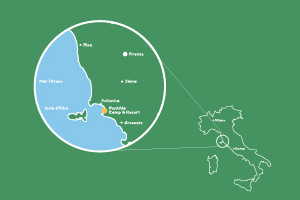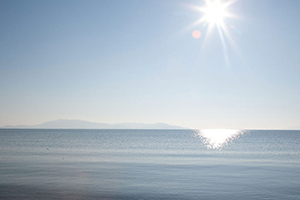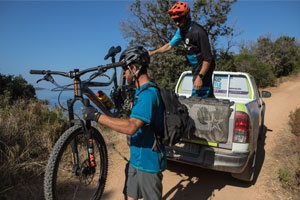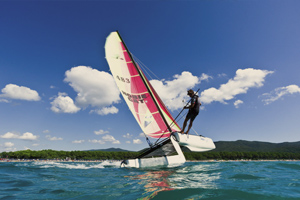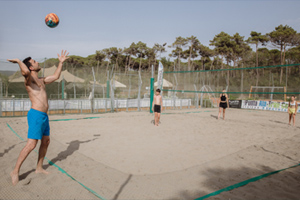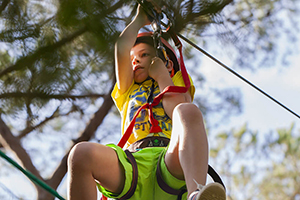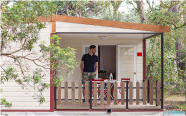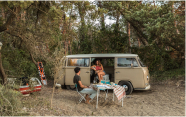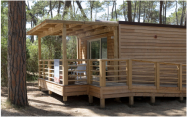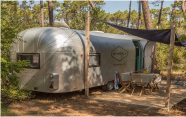Uccellina Park: what to see, routes, where to stay and how to get there
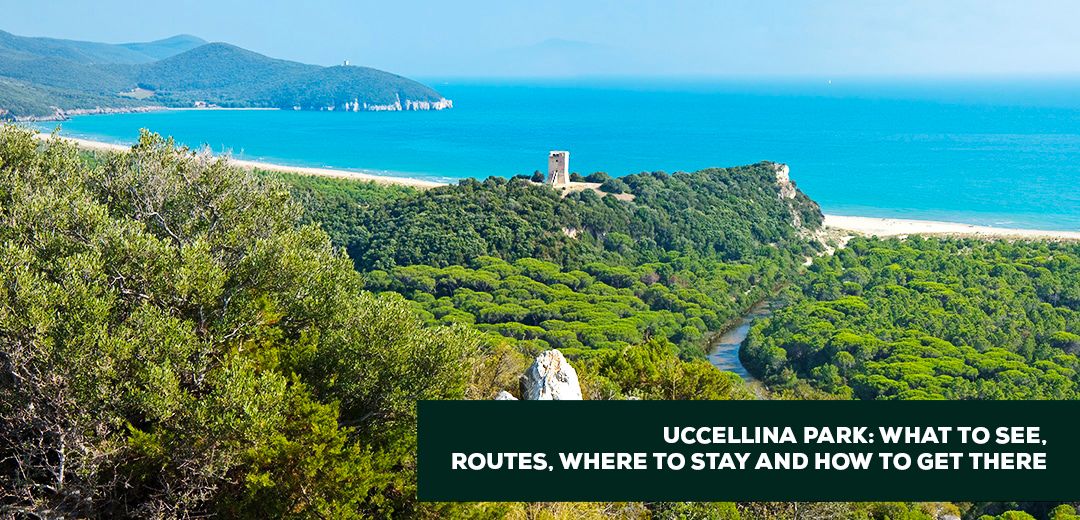
The Parco dell'Uccellina, considered the Natural Sanctuary of the Maremma, covers a vast area of over 10,000 hectares in the Grosseto area, in the heart of the Maremma, a splendid natural heritage. This vast green lung, inaugurated in 1975, stretches from the Tyrrhenian coast to the Aurelia State Road, offering picturesque views of the Uccellina Mountains and the turquoise waters of the Tyrrhenian Sea.
From the Alberese information point, it is possible to follow a wide range of footpaths to discover and observe the park's rich fauna and flora and visit attractions such as the San Rabano Abbey. There is accommodation both within the park and nearby, allowing for a total immersion experience in nature. The park is easily accessible from all major Tuscan cities.
Uccellina Park
Parco dell'Uccellina, also known as Parco Naturale della Maremma, covers an area of more than 10,000 hectares, located in the province of Grosseto, in the throbbing heart of the Maremma. This protected area spreads along the Tyrrhenian coastal strip between Principina a Mare and Talamone, extending eastwards as far as the Aurelia state road. It was inaugurated in 1975 thanks to Regional Law No. 65 of 5 June 1975 of the Region of Tuscany. The Monti dell'Uccellina, with Poggio dei Lecci rising up to 451 metres above sea level, occupy the central and southern portion of the park. From these heights, the view embraces the entire coastline, the Tyrrhenian Sea and the islands of Giglio, Elba and Corsica, offering a panorama of indescribable beauty. The park also offers a fascinating view of the Ombrone river, whose dark waters slowly join the green waters of the sea.
What to see in the Uccellina Park
The beating heart of the Uccellina Park is in Alberese, where the headquarters and visitor centre are located (phone +39 0564 407098 fax +39 0675 407292).
The area north of the mouth of the Ombrone is mainly flat, characterised by the Trappola marshes, a system of temporary and permanent lakes. To the left of the Ombrone, there is an area dominated by dunes, pine forests and artificial canals, vestiges of the first land reclamation promoted by the Lorraine.
The Monti dell'Uccellina, covered by dense vegetation consisting mainly of Mediterranean scrub, dominate the central and southern part of the park. These mountains are dotted with ancient towers, including those of Collelungo, Castelmartino, Cala di Forno and Bella Marsilia, as well as the important Abbey of San Rabano. To visit the park, one must go to the Alberese visitor centre, from where the buses for the park depart: from 9 a.m. to 2 p.m., every hour, one is transported to the heart of the park, at Pratini, the starting point of various itineraries. The park is rich in fauna of various species and includes wild boar, fallow deer, roe deer, badgers, foxes, porcupines, wild cats, weasels and beech martens, as well as a rich birdlife. The flora is dominated by Mediterranean scrub with oaks, holm oaks, strawberry trees, thyme, broom, sea rockrose and rosemary. An interesting plant is the cork oak: it is not uncommon to see specimens from which the bark has been removed to obtain cork.
San Rabano Abbey
Immersed in the lush Mediterranean scrub of the Parco dell'Uccellina, stand the evocative remains of San Rabano Abbey, once known as the Monastery of S. Maria ad Alberese.
This Benedictine complex was founded in the 11th century and remained active until 1475, when Siena, ruler of the entire area, decided to move the seat of the Priory from San Rabano to Alberese. The ruins of the monastery are well preserved and accessible from Pratini, located within the Parco dell'Uccellina. The layout of the triapsidal church probably dates back to the building constructed between the 11th and 12th centuries, with a central apse loophole that has the same stylistic features as the entrance portal. The central apse has been elevated, while the others retain the original hemispherical roof. The elevation is easily recognisable, as the lower part is composed of dressed local stone, while the upper part consists of small, irregularly shaped stones. The dome dates from a later period, perhaps 1321, when the Abbots' family took possession of the monastery and strengthened its defences with crenellated walls. On the same occasion, the watchtower, now known as the Uccellina Tower, was built.
Routes in the park:
The Uccellina Park offers the possibility of exploring various signposted footpaths. Tickets for each of these itineraries can be purchased at the Alberese visitor centre during spring and summer, or online in autumn and winter.
- Itinerary A1: San Rabano Abbey and Torre Uccellina - length: 16.1 km, high level of difficulty.
- Itinerary A1-B: From Alberese to San Rabano - length: 8.3km, moderate level of difficulty.
- Itinerary A2: The Towers - extension: 10,3km, moderate level of difficulty.
- Itinerary A3: Caves - extension: 9,6km, low level of difficulty.
- Itinerary A5-A6: Forest and Fauna - extension: 3,8km, low level of difficulty.
- Itinerary A7: Foce Ombrone - extension: 4,9km, level of difficulty low.
- Itinerary A8: Medieval Path - extension: 10,1km, low level of difficulty.
- Itinerary C1: Salto del Cervo - extension: 11,6km, high level of difficulty.
- Itinerary C2: Poggio alle Sugherine - extension: 7.6 km, high level of difficulty.
- Itinerary T1: Punta del Corvo - extension: 3.9 km, moderate level of difficulty.
- Itinerary T2: Cannelle - extension: 9.3 km, high level of difficulty.
- Itinerary T3: Poggio Raso - extension: 15.5 km, high level of difficulty.
Where to stay in the Uccellina Park
Within the Parco dell'Uccellina, near the beach of Cala delle Cannelle, there are some accommodation facilities that are the perfect solution for a holiday in close contact with nature. Don't forget the possibility of staying in Alberese, where the park's visitor centre is located: here the accommodation offer includes flats, residences, rooms to let and villas, while around the centre there are several agritourisms, farms and estates. The option of staying in Talamone is also very convenient: the town of Grosseto is highly developed in terms of tourism, with facilities of all kinds, from campsites to hotels, from flats to bed and breakfasts. Moreover, it is located directly by the sea, which is certainly an advantage for those who want to combine a visit to the Park with a relaxing day at the beach.
Map of the Uccellina Park
How to get to the Uccellina Park
The information heart of the park is located in Alberese, and this is where you should head for your discovery of the park. Alberese is only a 20-minute drive from the centre of Grosseto, along the Alberese provincial road to the south. Consequently, the route to reach the Uccellina Park from all Tuscan cities implies first an arrival in Grosseto, then in Alberese. For example, leaving from Florence takes just over 2 hours, crossing the Florence-Siena motorway and then continuing on the SS223 Paganico state road. From Siena, the journey time is reduced to 1 hour and 10 minutes, following the same route. If you come from the coast, either from Pisa or Livorno, you will have to proceed south along the SS1 Aurelia to Grosseto, then turn for Alberese. From both cities, the journey time is slightly less than 2 hours.
If you opt for public transport, we suggest you take the train to Grosseto, whose station is located on the Tyrrhenian railway line between Pisa and Rome, and then take the bus to Alberese with the G15 extra-urban line, which has its departure right in front of the Grosseto station. The bus journey takes about 25 minutes.
Where the Uccellina Park is located
The green oasis of the Maremma Natural Park covers an area of 9,000 hectares. This green area embraces the coastal strip from Principina a Mare to Talamone, crossing the territories of the municipalities of Grosseto, Magliano in Toscana and Orbetello.












